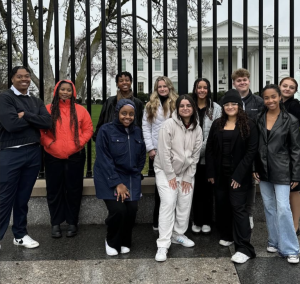In 2007, Rollins started the process of reevaluating their liberal arts education and general education requirements. With next year’s incoming freshmen, Rollins will be changing their general education requirements to better fit our needs as a liberal arts college.
The new plan, Rollins Foundations in the Liberal Arts (rFLA), began in 2008 with a small group of volunteer students who agreed to try out a different general education system. This new general education plan, consisting of different “neighborhoods” of classes, was developed as a result of those student’s experiences.
Under rFLA, classes will be taken in a more logical order. In other words, freshmen will not end up in classes more suited for seniors and vice versa. The new system will also help students to better integrate the information learned from each of their classes.
The new general education requirements will include five neighborhood classes, one RCC (Rollins College Conference), and four “competencies,” for a total of ten requirements. The four required competencies include foreign language (which, similar to now, may take additional semesters to complete), math, health and wellness, and writing. In contrast, current Rollins students are required to take 16 general education requirements, including two PEAs, one RCC, and one BPE.
The neighborhoods are themed to help encourage the integration of information between the classes within that neighborhood. The four themes are currently “When Cultures Collide,” “Mysteries and Marvels,” “Innovate, Create, and Elevate,” and “Identities: Mirrors and Windows.”
During their RCC, each freshman will decide what neighborhood they want to participate in. The RCCs are not planned to correlate with any specific neighborhood. However, the summer reading will be something that is relatable to all the neighborhoods, so the freshmen will get a taste of what each neighborhood will be like.
Though similar approaches have been tried in other colleges, there is something unique about rFLA. Claire Strom, director of rFLA, said, “By embedding community partners in each neighborhood, hopefully we will be able to have a kind of sustained community engagement.” Each neighborhood will team up with an area of the community and volunteer. Essentially, “Each neighborhood is planning to adopt a neighborhood,” Strom said.
“The faculty are developing pretty much all new classes for this,” says Strom. A faculty mayor will run each neighborhood, help develop curriculum, and make sure everything runs smoothly within their neighborhood. Also working with the neighborhoods will be “community coordinators,” similar to the peer mentors that work with RCCs.
Another way rFLA will benefit students is that the neighborhoods will provide social support when RCCs end after the first semester. “The idea of the neighborhoods is to take on some of that social cohesion as well. You leave your RCC, but you move into this new community of the neighborhoods,” says Strom. Some of these social events might include movie nights and block parties. The faculty are also considering offering Immersions that relate to the neighborhoods, as well as neighborhood-specific housing. Unlike RCC events, none of these activities will be mandatory.
rFLA will not affect current Rollins students—the school will run two different general education requirement systems simultaneously. Strom said, “While we don’t think our current gen-eds are bad, we think this is superior.”
Review of the Coverage
Sept. 27, 2012: Starting in August 2014, 10 tentative neighborhoods will comprise Rollins’ new general education curriculum. The last general education program proposal occurred in Fall 2009 with R-Plan, which academic programs promoted as a more cohesive, interdisciplinary liberal arts experience. Freshmen were recruited aggressively to adopt the curriculum, but within R-Plan’s first year, half of its 90 participants reverted to the earlier general education model. In comparison, the neighborhood program has been six years in the making and the transition “will cost a couple hundred thousand dollars,” according to Dr. Mark Anderson—the main architect behind the neighborhood gen-ed program. In the opinion of the author of the article, the project is a failure with serious momentum. However, to admit a serious miscalculation has been made would, on Rollins’ part, constitute a public relations nightmare. It would also constitute a tremendous waste of money.







Be First to Comment